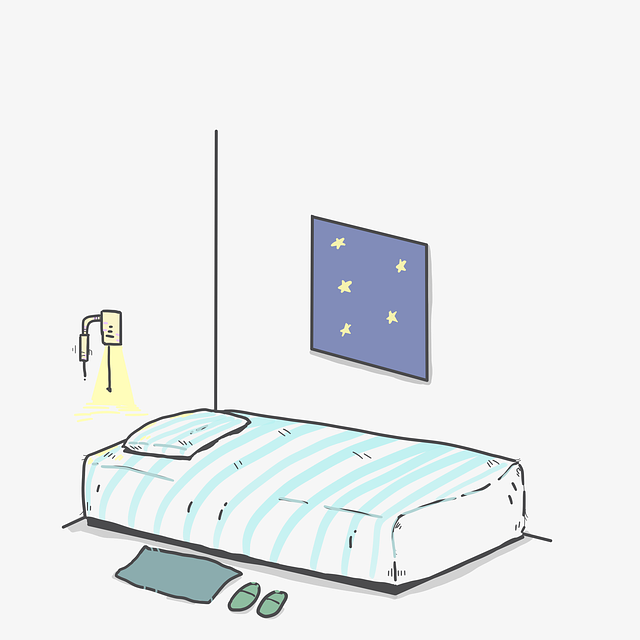Stress and sleep are deeply interconnected, with each influencing the other in a cyclical manner. Chronic stress can disrupt sleep patterns, while poor sleep exacerbates stress levels, creating a feedback loop that negatively impacts both mental and physical health. Understanding this relationship is crucial for breaking the cycle and achieving restorative rest, which is essential for overall well-being.
1. The Stress-Sleep Connection
Stress activates the body’s “fight or flight” response, releasing hormones like cortisol and adrenaline. While this reaction is beneficial in short bursts, prolonged stress keeps the body in a heightened state of alertness, making it difficult to relax and fall asleep. At the same time, inadequate or disrupted sleep impairs the brain’s ability to regulate emotions and cope with stress, further intensifying feelings of anxiety and tension.
This bidirectional relationship highlights why addressing both stress and sleep disturbances simultaneously is key to restoring balance.
2. How Stress Disrupts Sleep
Stress affects various stages of sleep, leading to difficulties in falling asleep, staying asleep, and achieving deep, restorative rest. Here’s how stress interferes with different aspects of sleep:
A. Insomnia
- Difficulty Falling Asleep : Racing thoughts, worry, and elevated cortisol levels make it hard to quiet the mind at bedtime.
- Frequent Awakenings : Stress triggers hyperarousal, causing individuals to wake up multiple times during the night.
- Early Morning Awakening : High cortisol levels early in the morning can disrupt the final stage of sleep, leaving you feeling unrefreshed.
B. Reduced Deep Sleep
Deep sleep (slow-wave sleep) is critical for physical recovery, memory consolidation, and immune function. Stress reduces the amount of time spent in this restorative phase, impairing cognitive performance and increasing fatigue.
C. Nightmares and Vivid Dreams
Heightened stress often leads to more intense dreaming or nightmares, particularly during REM (rapid eye movement) sleep. These disturbances can jolt you awake and leave you feeling unsettled.
3. The Impact of Poor Sleep on Stress
Just as stress disrupts sleep, poor-quality sleep amplifies stress levels. Sleep deprivation affects the brain’s prefrontal cortex—the region responsible for decision-making, impulse control, and emotional regulation—making it harder to manage daily challenges. Key effects include:
- Increased Irritability : Lack of sleep lowers frustration tolerance, leading to heightened sensitivity to minor stressors.
- Impaired Problem-Solving : Sleep-deprived individuals struggle to think clearly and find solutions to stressful situations.
- Heightened Emotional Reactivity : The amygdala, which processes emotions, becomes overactive without sufficient rest, increasing feelings of fear, anger, and anxiety.
This creates a vicious cycle where stress worsens sleep, and poor sleep intensifies stress.
4. Physiological Mechanisms Behind the Stress-Sleep Link
Several biological processes explain how stress and sleep interact:
A. Cortisol Dysregulation
Cortisol follows a natural circadian rhythm, peaking in the morning to promote wakefulness and declining at night to facilitate sleep. Chronic stress disrupts this pattern, leading to elevated evening cortisol levels that interfere with sleep onset and maintenance.
B. Overactive Sympathetic Nervous System
The sympathetic nervous system, responsible for the “fight or flight” response, remains overly active under stress. This prevents the parasympathetic nervous system—the “rest and digest” mode—from taking over, hindering relaxation and sleep.
C. Neurotransmitter Imbalance
Stress alters the balance of neurotransmitters like serotonin, dopamine, and gamma-aminobutyric acid (GABA), which play vital roles in mood regulation and sleep initiation. For example, low GABA levels are associated with insomnia and anxiety.
5. Common Causes of Stress-Related Sleep Disturbances
Identifying the sources of stress can help address underlying issues contributing to sleep problems. Common causes include:
- Work Pressure : Long hours, tight deadlines, and job insecurity create chronic stress that spills into nighttime.
- Financial Worries : Concerns about money can lead to persistent anxiety and sleepless nights.
- Relationship Conflicts : Arguments or unresolved tensions with loved ones heighten emotional distress.
- Health Issues : Chronic pain, illness, or caregiving responsibilities increase stress and disrupt sleep.
- Major Life Changes : Events like moving, divorce, or loss of a loved one trigger acute stress that affects sleep.
6. Strategies to Break the Stress-Sleep Cycle
Addressing both stress and sleep disturbances requires a holistic approach. Below are practical strategies to restore balance:
A. Establish a Relaxing Bedtime Routine
- Engage in calming activities before bed, such as reading, taking a warm bath, or practicing gentle yoga.
- Avoid stimulating tasks like checking emails or watching intense TV shows.
B. Practice Stress-Reduction Techniques
- Meditation and Mindfulness : These practices calm the mind and reduce physiological arousal, preparing the body for sleep.
- Deep Breathing Exercises : Techniques like 4-7-8 breathing (inhale for 4 counts, hold for 7 counts, exhale for 8 counts) activate the parasympathetic nervous system.
- Progressive Muscle Relaxation (PMR) : Systematically tensing and relaxing muscles releases physical tension caused by stress.
C. Create a Sleep-Friendly Environment
- Keep your bedroom cool, dark, and quiet to signal to your brain that it’s time to sleep.
- Use blackout curtains, white noise machines, or earplugs if needed.
- Limit screen time at least an hour before bed to minimize blue light exposure, which suppresses melatonin production.
D. Manage Daytime Stress
- Exercise Regularly : Physical activity reduces cortisol levels and promotes better sleep.
- Prioritize Time Management : Breaking tasks into manageable steps reduces overwhelm and improves productivity.
- Seek Social Support : Talking to friends, family, or a therapist provides emotional relief and fosters resilience.
E. Maintain Consistent Sleep Habits
- Stick to a regular schedule, even on weekends, to regulate your internal clock.
- Avoid napping late in the day, as it can interfere with nighttime sleep.
7. When to Seek Professional Help
If stress-related sleep disturbances persist despite implementing self-care strategies, it may be time to consult a healthcare provider. Conditions like chronic insomnia, generalized anxiety disorder, or depression require professional intervention. Treatment options include:
- Cognitive Behavioral Therapy for Insomnia (CBT-I) : A structured program that addresses negative thought patterns and behaviors contributing to sleep problems.
- Therapy or Counseling : Cognitive-behavioral therapy (CBT) or mindfulness-based therapies can help manage stress and improve coping skills.
- Medication : In some cases, short-term use of sleep aids or anti-anxiety medications may be prescribed, though they should always be combined with non-pharmacological approaches.
8. The Importance of Addressing Both Stress and Sleep
Ignoring either stress or sleep can have far-reaching consequences for physical and mental health. Chronic sleep deprivation increases the risk of cardiovascular disease, obesity, diabetes, and weakened immunity. Similarly, unmanaged stress contributes to inflammation, hormonal imbalances, and mental health disorders like anxiety and depression.
By prioritizing stress reduction and sleep hygiene, you not only improve your quality of life but also build resilience against future challenges.
Final Thoughts
The link between stress and sleep disturbances underscores the importance of adopting a proactive approach to managing both. By identifying stressors, establishing healthy sleep habits, and incorporating relaxation techniques into daily life, you can break the cycle of stress-induced sleeplessness and reclaim restorative rest. Remember, small, consistent changes often yield significant results over time.
If you’re struggling to find balance, don’t hesitate to reach out for support. With the right tools and resources, you can achieve a harmonious relationship between stress and sleep, paving the way for greater peace and vitality.








